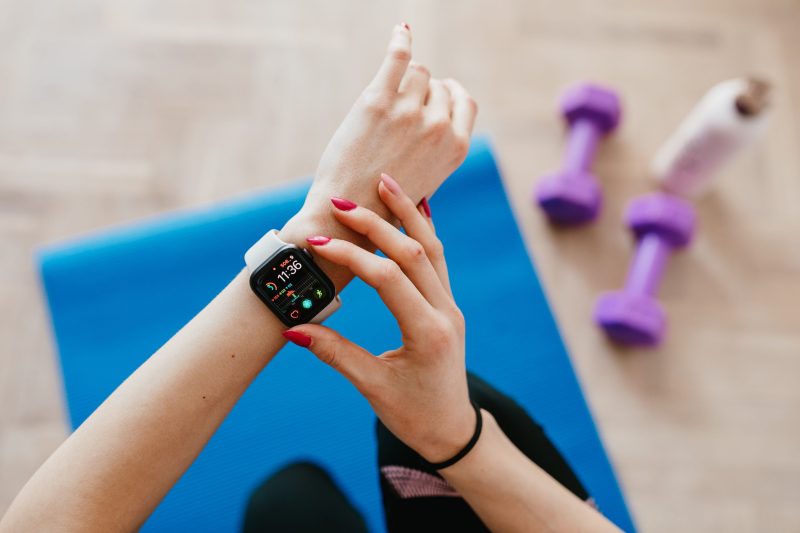If you were to reflect on your health for a moment, what would your rapid and honest response be? If it’s overall good and healthy, great! Good for you! However, if this question made you uncomfortable, then the odds are your health is not in its optimal state or could at least use some improvements. Committing to a good healthy lifestyle is easier said than done, but not one that isn’t achievable, and the key to making it such is to do so efficiently.
One of the most important ways of maintaining one’s health is to exercise regularly, yet for some people, it can be a struggle due to multiple reasons such as laziness, a lack of motivation, and a lack of time — the central interest of this article.
For exercise to be efficient, you need to accommodate it into your lifestyle, by either making time for it or by generating a workout routine that is time friendly and not too lengthy.
What is efficient exercising?
Researchers Hötting, K. & Röder, B. (2013) define exercising as a form of physical activity that is usually planned in a repetitive and structured way aimed at improving and sustaining one’s physical health and overall well-being.
Similar to this definition, efficient exercising is the kind of exercise that takes time into account and makes a workout more friendly and tailored to an individual’s capabilities and availability. Efficient exercising aims at making workouts more routine, more sustained, and above all, achievable.
We must make time for exercise because the benefits of doing so are immeasurable, mainly as it promotes every area of one’s health status, from physical to mental well-being.
The vitality of physical activity is further highlighted when we reflect on the repercussions of its absence whereby risks of not exercising regularly have been associated with a multitude of diseases including cardiovascular diseases, diabetes, cancer, obesity, hypertension, bone and joint diseases, as well as depression.
Research has also revealed that individuals who were physically fit and healthier exhibited better performance in the workplace and thus we also notice how exercising touches upon benefiting an individual’s personal productivity. That being said, we now acknowledge ‘why’ we need to exercise regularly, now let’s have a look at the ‘how’ to do it efficiently and make it time-friendly.
How can you exercise efficiently?
The matter of understanding efficient exercising dials down basically to: how many calories as possible can be burned as a function of time. The trick lies in doing activities that are high-calorie burners and that usually consume little time. Let’s dive into some ideas and how to pivot around them:
Before exercising
The efficiency of your exercise routine will be determined even before you start. Here are some of the things you can do to set yourself up for success.
Keep your workout clothes within reach
Preparation for working out can sometimes be a demotivating factor because not knowing what to wear, or not having workout clothes ready at hand, may generate an excuse for delay and could set the trigger for you to drop the workout.
Therefore, always make sure to have your workout clothes available and ready, by either having a designated space in your closet for workout clothes or perhaps by leaving your gym bag in the car so that it’s with you wherever you go.
Have a pre-set schedule
Allocate a time of your day for working out — one that fits in your calendar — and choose a time when your energy levels are in optimal condition. If you constantly return from work exhausted and lethargic, then perhaps setting a workout after that time may not be efficient as your energy levels may be depleted and it can serve as a demotivating obstacle for working out. Waking up earlier in the morning and squeezing in a short 30-minute workout may prove to be far more effective in this instance.
During exercising
Try to aim for short, effective workouts. Some exercises that can come in handy, when we take into account time shortage, are workouts that burn high amounts of calories in a short amount of time. Such examples include HIIT workouts, jump rope, and free weights.
HIIT workouts
High-Intensity Interval Training (HIIT) are workouts that include activities such as lunges, squats, pushups, and burpees. They can be effective exercises as they can burn up to an average of 15 calories per minute!
Jump rope
The same goes for jump rope which can burn around 100 calories for 10 minutes when performed at a moderate pace. One of the many perks of jumping rope is that it is a simple equipment to acquire and is rather mobile as it can be performed at home, in a park, or in the gym as well.
Free weights
When it comes to free weights they can be more effective than machines as they require more muscle group involvement and more fibers, as opposed to machines that tend to target specific muscle groups.
Choosing to include such types of exercises in your workouts increases the efficiency level in a short time frame.
After exercising
An important aspect to take into consideration, to make your workouts overall effective, is to ensure their longevity. Working out with the aim of physical bodily improvements, be it losing weight or gaining muscle, are not the sort of change that will have results materialize quickly. It will take at least several months before you can see visible and sustainable results. With that in mind, you need to take into account how your workouts can be sustainable and practiced in the long term.
Apply the SMART Goals principle when creating your workout
One way to make your workouts genuinely sustainable is by customizing your workouts and aligning them with your circumstances and one very effective way to do so is via the SMART Goal-setting method. Making sure that your workouts are achievable and realistic in particular would greatly enhance the efficiency of the workouts as it will ensure their sustainability as well as their actual completion and performance.
Lead a physically active lifestyle
If you struggle with your time to incorporate workouts, then you can also try adopting a physically active lifestyle. Sometimes being physically active does not need to be necessarily limited to a gym or at-home workout. You can get creative and disseminate your exercising via other areas of your life where working out can be incorporated almost unnoticeably.
For example, instead of constantly using the elevator, use the stairs instead so you can activate your leg muscles similar to squatting workouts. If you have a work call, conduct the call while you are walking, so you’d burn more calories and get your steps in.
Another approach can be merging social life with your workouts. If you want to catch up with a friend, instead of going to grab coffee, why not meet at a park and have a nice jog from time to time?
Though such ideas may not seem as significant or decent enough, any small inputs, over time eventually do add up and make a valuable difference. As James Clear highlights in his book Atomic Habits, every small habit counts and is worthy especially as it adds up in the long run. For reference, imagine this: 20 flights of stairs to get to the office would be 20 climbs per day, 100 per week, and around 33,500 per year.
In conclusion
Remember that workouts do not need to be set in stone and are not meant to be rigid. Feel free to always amend and enhance your workout plans and routines, and accommodate them to your lifestyle. At the end of the day, what matters is that you are physically moving and sustaining a decent level of health.
We all lead different lifestyles and different jobs and we have different time availability. Some may afford to work out for hours in the gym, some may struggle to spare half an hour a day. It all dials down to at least taking care of your health and getting the blood flowing in your system by exercising as much as you can.
As mentioned in this article, take into account the readiness for a workout, prioritize workouts that are high-calorie burners and consume the least time, and finally make sure these workouts are achievable and realistic so that you can actually stick to them. The end goal after all is to stay healthy and it shouldn’t be regarded as a tedious task but an easily incorporated aspect of our lifestyle. And finally, physical fitness and exercise are not the only factors to take into account when considering overall health and well-being. A balanced diet, as well as sleep, are vital factors to look into as well.
If you would like to take your reading on efficient exercising further, take a look at the Personal Productivity Science Labs. The lab uses the research of the Institute for Life Management Science to produce courses, certifications, podcasts, videos, and other learning materials. Visit the Personal Productivity Science Labs today.
Disclaimer: The contents of this article pertain to exercising for individuals who are short on time or want to engage in workouts that are effective within short time frames. This article does not represent the ideal way of exercising or the optimal way to achieve physical fitness. Always check with your healthcare provider before starting any exercise regimen.
Photo by Karolina Grabowska



